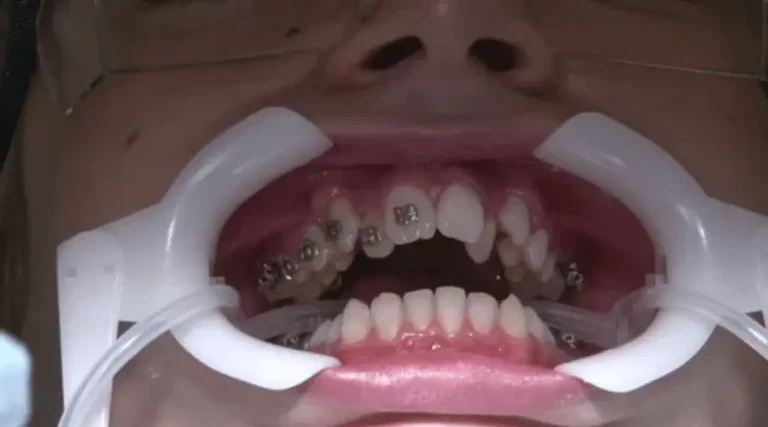Mice infestations can bring about a range of problems for homeowners, from damage to property to the spread of diseases. To address this issue, many homeowners turn to glue traps as a means of catching these pesky rodents. While glue traps are known to be effective, there are advantages and disadvantages to using them that must be considered.
This article aims to provide a comprehensive overview of the effectiveness of glue traps for mice, exploring their advantages and disadvantages, as well as alternative options for controlling these pests.
As homeowners, the presence of mice in our homes can be unsettling and can leave us feeling like we are losing control. It is important to understand the best methods for catching and removing mice to regain a sense of control over our homes.
In this article, we will discuss the effectiveness of glue traps for mice and the various factors that can impact their success. By understanding the advantages and disadvantages of glue traps and alternative options available, homeowners can make informed decisions that will help them to effectively control mice infestations and regain a sense of control over their homes.
Overview
Understanding the advantages and disadvantages of using a specific type of rodent control method is crucial to effectively managing and preventing infestations in residential and commercial spaces. When it comes to glue traps for mice, it is important to consider the effectiveness of adhesive traps for mice in different environments and the pros and cons of using glue traps for mice.
Glue traps are nontoxic, cheaper than snap traps, and can hold a dead mouse for easy disposal without the need to clean or re-bait. However, mice can suffer and suffocate on glue traps, and dead mice are visible, which can be a disturbing sight for some individuals. Children and pets can also get stuck on glue traps, and they won’t work in extreme temperatures, direct sunlight, or dirty areas.
It is important to consider these factors when deciding to use glue traps for mice. In the next section, we will discuss the signs of mouse activity that can help identify where to place the traps.
Signs of Mouse Activity
Evidence of mouse activity can be identified through a variety of signs, including droppings, odors, markings, noises, and the presence of live or dead mice, all of which are crucial in determining the need for pest control measures.
When considering the use of glue traps for mice, it is important to strategically place them in areas with high activity and continually monitor their effectiveness over time. To increase the success rate of glue traps, it is recommended to use them in conjunction with other pest control methods, such as sealing entry points and removing food sources.
It is also important to choose the best glue traps for mice and change them regularly to avoid decreased effectiveness. While glue traps can be effective in catching mice, it is important to consider the potential downsides, such as the inhumane treatment of mice and the risk of children and pets getting stuck.
Despite these concerns, the advantages of glue traps, such as their affordability and easy disposal, make them a popular choice for many homeowners.
Advantages of Glue Traps
The cost-effectiveness of using non-lethal measures in pest control, such as sticky glue traps, can be likened to investing in renewable energy sources, where the initial investment may be higher, but the long-term benefits outweigh the costs.
Glue traps are effective in catching mice, as they are cheap, nontoxic, and can hold a dead mouse without the need for cleaning or re-baiting. They are also easy to dispose of and can fit into tight spaces.
However, there are also disadvantages to using glue traps, such as the fact that mice can struggle and suffocate on them, and dead mice are visible on the trap. Additionally, children and pets can get stuck on glue traps, and they won’t work in extreme temperatures, direct sunlight, or dirty areas.
It is important to properly handle and attract mice to the glue traps by placing them in areas with high mouse activity and changing the glue board traps regularly.
While glue traps are a viable option for catching mice, it is important to consider the pros and cons before using them. The subsequent section will discuss the disadvantages of glue traps.
Disadvantages of Glue Traps
The limitations of using sticky glue traps as a method of rodent control are important to consider, as these traps can result in animal suffering, may not be suitable for certain environmental conditions, and pose a risk to non-target species.
While glue traps are effective in catching mice, they do not offer a quick death, as mice can struggle and suffocate while trapped. In addition, dead mice are visible on the trap, which can be unpleasant for consumers.
Moreover, glue traps are less effective in extreme temperatures, direct sunlight, or dirty areas. There is also the risk of children and pets getting stuck on the glue.
From a consumer perspective, glue traps are cheaper than snap traps, hold dead mice, and are easy to dispose of, but they are only good for one use and won’t work in certain conditions. A comparison of glue traps vs snap traps for mice shows that snap traps offer a quicker, more humane death, and can be reused.
Proper handling and placement of glue traps can improve their effectiveness, and the next section will discuss this further.
Proper Handling and Placement
Maximizing the efficiency of sticky rodent traps necessitates careful handling and strategic placement, and understanding these factors can significantly improve trap performance.
First, it is important to place the traps in areas with high mouse activity, such as near droppings, grease marks, and crumbs.
Second, properly handling the traps is important to ensure they remain sticky and do not become contaminated by human scent or debris.
Finally, responsible disposal of caught mice is crucial to prevent the spread of disease and unpleasant odors.
Common mistakes to avoid when using glue traps for mice include using too much bait, not changing the traps regularly, and placing the traps in areas where children and pets can come into contact with them.
While glue traps can be effective, alternative options such as catch-and-release traps, live-catch traps, electronic mouse traps, and traditional snap traps may be more humane and effective in certain situations.
Alternative Options
Exploring alternative methods of rodent control can provide a more humane and effective solution for homeowners.
While glue traps for mice may be effective in some cases, there are alternatives to glue traps for humane mouse control. Catch-and-release traps, live-catch traps, electronic mouse traps, and traditional snap traps are all options that may provide a more humane approach to rodent control.
Additionally, using glue traps strategically in mouse-prone areas and changing them regularly can improve their effectiveness. However, it’s important to consider the pros and cons of glue traps for mice from a consumer perspective, including the potential suffering of trapped mice and the risk of children and pets getting stuck.
The effectiveness of adhesive traps for mice in different environments, such as extreme temperatures or dirty areas, should also be considered. Overall, it’s important to weigh the options carefully to ensure the safest and most humane treatment of rodents.
Considerations for Safety and Humane Treatment
When considering the safety and humane treatment of rodents, it is imperative to carefully evaluate the various options available to homeowners in order to ensure that the well-being of both animals and humans is prioritized, and that the chosen method is both effective and ethical.
While glue traps for mice may be effective in catching rodents, they also raise ethical implications regarding the safety and humane treatment of the trapped mice. Glue traps can cause prolonged suffering for the trapped mice, as they struggle to free themselves and eventually succumb to dehydration or starvation.
In addition to the potential for animal cruelty, glue traps can also pose a risk to children and pets who may accidentally come into contact with them. It is important to consider the potential toxicity to mice from glue traps, as well as the potential harm to other non-target animals that may become trapped.
Alternative options, such as catch-and-release traps or electronic mouse traps, may provide a more humane and effective solution for rodent control while minimizing harm to animals and humans alike.
Conclusion
In conclusion, while glue traps are effective tools for catching mice, they come with advantages and disadvantages that need to be considered. Proper handling and placement are crucial for their effectiveness, and alternative options like snap traps and live traps are also available. It is important to attract mice to catch a lot of them and to ensure the safety and humane treatment of pests.
Overall, mice infestation can bring disease and destruction to homes, making it necessary to take measures to prevent and remove them. Safe and humane pest control services are available for those who prefer not to handle the task themselves.
As experienced professionals, we understand the importance of effective pest control and the need for proper handling and treatment. With the right approach, mice infestation can be effectively controlled, ensuring a safe and comfortable living environment for all.




